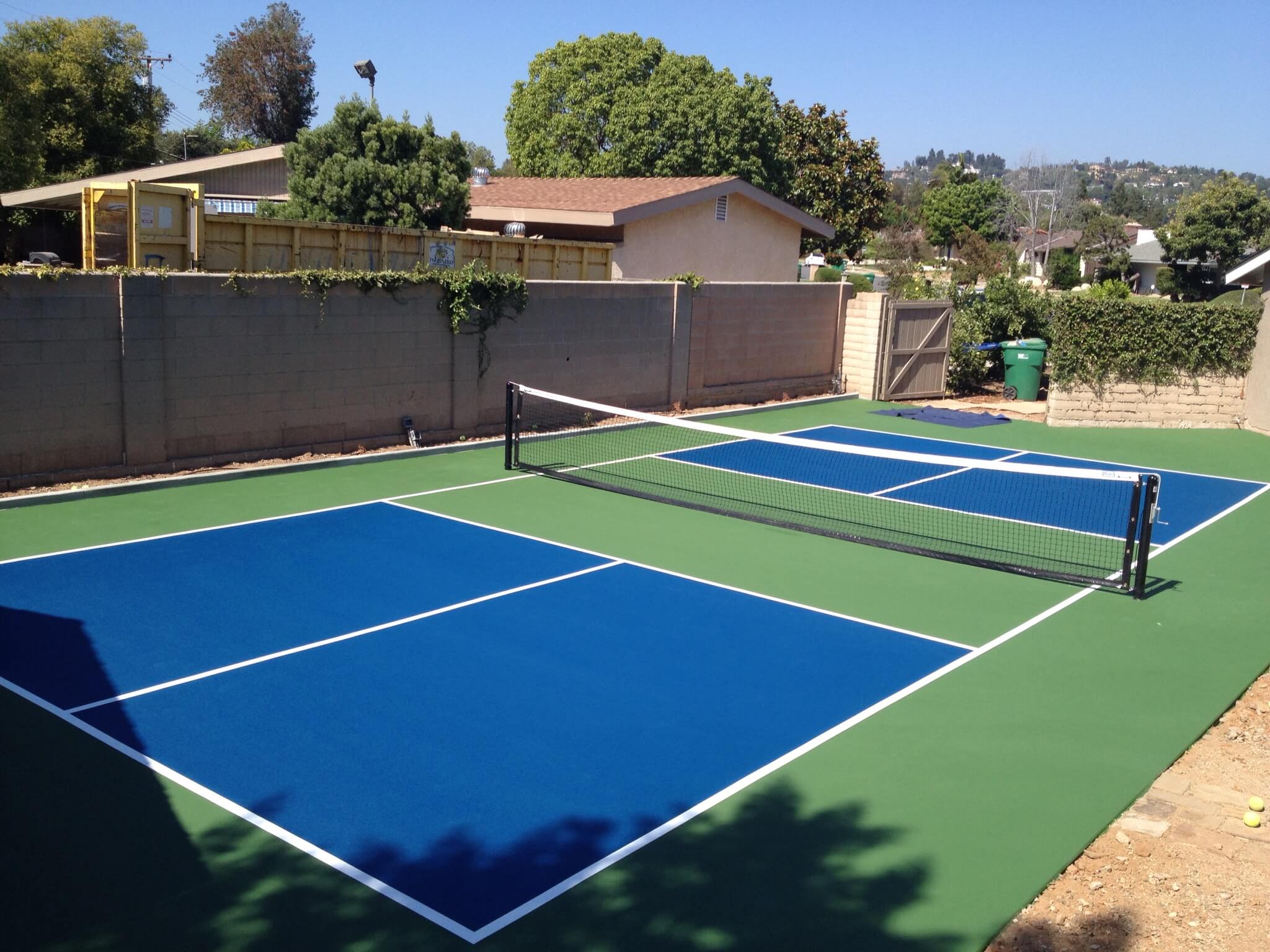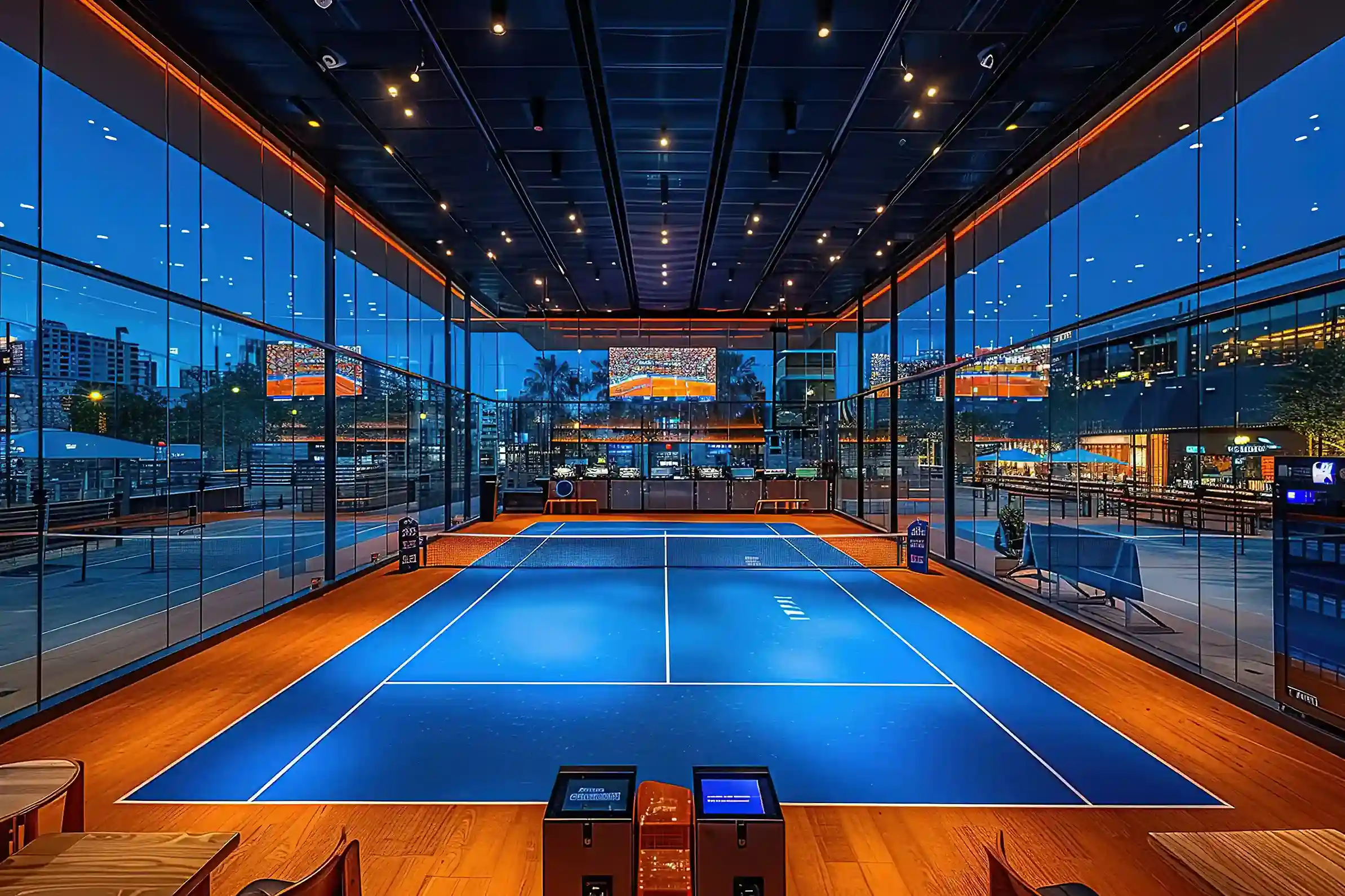Creating your own pickleball court can be an exciting and rewarding project. The right court tiles play a key role in ensuring a high-quality playing surface. Pickleball court tiles are designed for durability, traction, and weather resistance, making them perfect for outdoor use. This guide will help you choose the best tiles and provide step-by-step instructions for installation.
Whether you’re building a personal court or upgrading an existing one, this DIY guide will assist you in creating a durable, professional-grade pickleball court that lasts.
What Are Pickleball Court Tiles and Why Should You Choose Them?
Pickleball court tiles are specially designed modular flooring options for creating pickleball courts, offering a durable and versatile surface for both indoor and outdoor play. These tiles are made from high-quality, weather-resistant materials such as polypropylene, making them ideal for various climate conditions.


Their interlocking design allows for easy installation, making them a popular choice for DIY enthusiasts looking to build or upgrade their courts. The tiles are designed to offer the same consistent bounce and grip found on professional courts, ensuring a high-quality playing experience.
Benefits Over Traditional Surfaces
Pickleball court tiles offer several advantages over traditional surfaces like asphalt or concrete. One major benefit is their ability to be installed without the need for specialized equipment or professional labor, making them a cost-effective choice for home courts. Additionally, they provide better traction and comfort, reducing the risk of injury compared to harder surfaces. Tiles are also low-maintenance; easy to clean and resistant to weathering.
While traditional surfaces often require costly repairs and upkeep. Moreover, they allow for customization in court design and can be replaced individually if damaged, offering long-term convenience and value.
With these benefits, pickleball court tiles are becoming the preferred choice for recreational players and facilities alike, providing an accessible and durable solution to meet the demands of the game.
Types of Pickleball Court Tiles
Pickleball court tiles generally come in two types:
1.Modular
2.Interlocking.
Modular tiles are larger, pre-formed tiles that are designed to fit together easily to create a seamless surface. They typically offer more flexibility and can be customized based on court size.
On the other hand, interlocking tiles feature smaller individual pieces that snap together, offering even greater ease of installation. These interlocking tiles are ideal for DIYers, as they don’t require any adhesives or specialized tools.
Both types of tiles provide excellent durability and a professional-grade playing experience, but the choice between them often comes down to personal preference and the specific requirements of your court.
Materials and Textures:
Premium pickleball court tiles are made from a variety of materials, with polypropylene being one of the most common due to its strength and resistance to weather conditions. Polypropylene tiles are durable, lightweight, and resistant to UV rays, making them suitable for both indoor and outdoor courts.
PVC is another material used, which offers similar benefits in terms of durability and resistance to wear and tear. When it comes to textures, tiles are designed to mimic the bounce and traction of traditional court surfaces like asphalt or concrete. Some tiles come with textured surfaces that enhance grip and reduce slippage, while others have smoother surfaces for faster ball movement.
This variety allows players to choose a surface that suits their specific style of play, whether they prefer more traction or a quicker-paced game.


Key Features to Look for in Pickleball Court Tiles
Some key features to look for in pickleball court tiles are listed hereunder
Durability and Weather Resistance
One of the most important factors when selecting top-quality pickleball court tiles is durability. Tiles should be made from materials like polypropylene or PVC, which are both known for their strength and long-lasting qualities. These materials can withstand the outdoor elements, including sun, rain, and extreme temperatures. Polypropylene, in particular, is UV-resistant, ensuring that your court tiles won’t fade or degrade over time due to exposure to sunlight. Weather resistance is crucial for outdoor courts, where tiles need to endure rain, snow, and other harsh conditions without cracking or warping. Choosing tiles with these properties ensures a long lifespan and less maintenance.
Traction and Grip
A key feature of pickleball court tiles is their ability to provide sufficient traction and grip. This helps prevent players from slipping while running or pivoting on the court. High-quality tiles are designed with textured surfaces that enhance grip without being too abrasive. Look for tiles that have a non-slip design, which can reduce the risk of injury and improve the overall playing experience.
The right amount of traction also contributes to the bounce of the ball, ensuring that it behaves predictably for a consistent game. Proper traction is especially important in areas that experience high humidity or rain, as it helps maintain safety and performance.
Easy Maintenance
Pickleball court tiles are designed to be easy to clean and maintain. Unlike traditional court surfaces that may require repaving or extensive repair, modular and interlocking tiles can be quickly swept or power washed. Most tiles are resistant to stains, mold, and mildew, making them a low-maintenance option for outdoor courts.
Additionally, if a tile becomes damaged or worn out, it can be replaced individually, which is much more cost-effective than repairing an entire court. This ease of maintenance is a major selling point for DIY enthusiasts who want to keep their court in top condition without a lot of hassle.
By considering these key features you can select high-quality pickleball court tiles that offer the best performance, safety, and longevity for your playing surface.
Step-by-Step Guide to Installing Your Pickleball Court Tiles
Tools and Materials You’ll Need
Before you start the installation, gather the necessary tools and materials. Here’s a quick list:
●Pickleball Court Tiles (modular or interlocking, based on your preference)
●Measuring tape (to ensure proper dimensions for the court)
●Rubber mallet (to gently tap tiles into place without damaging them)
●Utility knife (for cutting tiles if necessary to fit edges)
●Level (to ensure the tiles are even)
●Rake (for preparing the ground surface)
●Shovel (for digging any uneven areas)
●Power washer (for cleaning the tiles before installation, if required)
Having the right tools will make your installation process smoother and ensure that the tiles fit correctly.


Preparing the Ground Surface
Proper preparation of the ground is key to ensuring your tiles last and perform well. Follow these steps:
1.Clear the Area: Remove any debris, grass, or existing surfaces that may interfere with the installation. Make sure the area is free of sharp objects, sticks, or rocks.
2.Level the Ground: Use a rake and shovel to ensure the surface is as even as possible. If there are any large dips or bumps, fill them in with dirt or sand to create a smooth base.
3.Compact the Surface: After leveling, compact the ground with a roller or similar tool to ensure a firm, stable foundation. This will prevent shifting or unevenness over time.
4.Optional – Lay a Base Layer: If you’re installing the tiles outdoors, consider laying down a base layer of gravel or sand to promote drainage and stability.
Laying the Tiles for Optimal Performance
Now comes the fun part; laying the tiles! Follow these steps for optimal performance and durability:
1.Start from a Corner: Begin in one corner of the court and work your way outward. This ensures the tiles fit together properly and the court layout remains square.
2.Interlock the Tiles: If you’re using interlocking tiles, simply snap them together. For modular tiles, lay them side by side and press them into place. Use a rubber mallet to gently tap them to ensure they’re firmly connected.
3.Check for Alignment: As you lay the tiles, periodically check with a level to ensure they are even. This is especially important in larger areas where unevenness can become more noticeable.
4.Cutting Tiles for Edges: If the tiles don’t fit the edges perfectly, use a utility knife to trim the edges. Make sure any cut edges are smooth and fit snugly next to the perimeter.
5.Complete the Installation: Once all tiles are laid, double-check the layout to ensure everything is aligned properly. Walk around the court and tap down any tiles that may need adjustment.
Final Steps: After installation, give your court a quick cleaning to remove any dirt or debris. The surface should be dry before you start playing. Consider applying a coat of sealant for extra protection if the tiles will be exposed to heavy weather.
By following these steps, you can ensure that your stylish pickleball court tiles are installed properly, providing a durable and professional-quality surface for years of enjoyable play.


The Bottom Line
Installing pickleball court tiles can transform your backyard into a professional-quality playing surface, offering durability, easy maintenance, and excellent performance. With the right preparation and installation techniques, you can enjoy a court that meets your needs for years.
However, if you’re not a DIY enthusiast or prefer to leave the installation to the professionals, we’ve got you covered. Contact VMKON today for a quote, and let us handle the job with expertise and precision. Whether you’re looking to build a new court or upgrade an existing one, we are here to make the process smooth and hassle-free for you.







